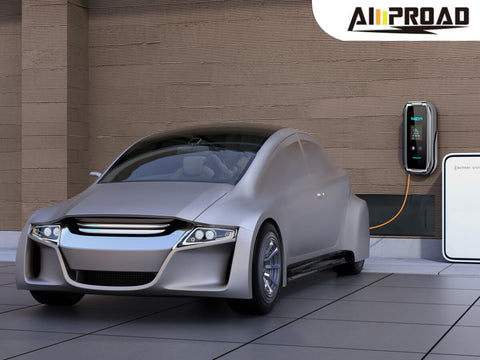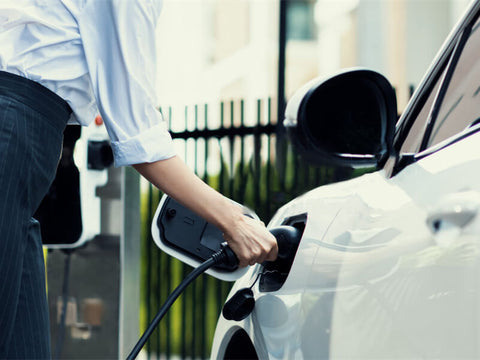
The charging speed significantly impacts the lifespan of electric vehicle (EV) batteries. As EV battery technology advances, understanding how charging speed affects battery health becomes increasingly crucial. Rapid charging, while convenient, can accelerate battery degradation due to the heat generated during the charging process. On the other hand, slower charging rates are generally gentler on the battery and can help preserve its longevity. Therefore, striking a balance between charging speed and battery health is essential for maximizing the lifespan of EV batteries.
EV battery technology continues to evolve, with manufacturers constantly striving to improve energy density, charging efficiency, and overall performance. These advancements offer exciting possibilities for electric vehicles, but they also raise questions about the best charging practices to ensure battery longevity. By delving into the relationship between charging speed and battery lifespan, EV owners can make informed decisions about their charging habits, ultimately optimizing the performance and durability of their vehicle's battery over time.
Understanding Battery Degradation
Battery degradation in electric vehicles (EVs) is influenced by various factors, including the frequency and speed of charging. The chemistry of lithium-ion batteries, commonly used in EVs, is sensitive to high temperatures and rapid charging rates. Charging at fast speeds generates more heat, which can accelerate chemical reactions within the battery and lead to degradation over time. Factors such as the depth of discharge, or how much of the battery's capacity is used before recharging, also play a role in battery health. Additionally, environmental conditions, such as temperature fluctuations and exposure to extreme heat or cold, can further impact battery degradation.
Charging speed directly affects the rate at which batteries degrade. Rapid charging, while convenient for minimizing charging times, can contribute to increased wear on the battery cells. Tesla, a prominent EV manufacturer, offers its own charging infrastructure, including the Tesla destination charger, designed to provide convenient charging solutions for Tesla owners. These chargers typically offer slower charging speeds compared to high-power Superchargers, which are optimized for faster charging. The slower charging speeds of destination chargers are intended to be gentler on the battery and help mitigate the effects of rapid charging on battery degradation. By providing a balance between convenience and battery health, Tesla destination chargers offer Tesla owners a reliable option for charging their vehicles while minimizing the risk of accelerated battery degradation.
Exploring Charging Speed Variations
Charging speed variations in electric vehicles (EVs) can significantly impact battery longevity. Fast charging, characterized by higher charging rates and shorter charging times, is convenient for drivers on the go but can have adverse effects on battery health. Rapid charging generates more heat within the battery cells, which can lead to increased degradation over time. On the other hand, slow charging, which involves lower charging rates and longer charging times, is generally gentler on the battery and can help preserve its longevity. Therefore, understanding the differences between fast charging and slow charging is crucial for EV owners to make informed decisions about their charging habits.
The effects of rapid charging on battery longevity are particularly important to consider. While rapid charging offers the convenience of quicker charging times, it also accelerates the degradation of lithium-ion battery cells. The increased heat generated during rapid charging can cause chemical reactions within the battery that lead to irreversible damage over time. As a result, frequent use of rapid charging can contribute to reduced battery capacity and overall performance. EV manufacturers often recommend limiting the use of rapid charging and opting for slower charging methods whenever possible to minimize the impact on battery health.
Tesla, a leading EV manufacturer, offers a range of charging options for its vehicles, including fast-charging Superchargers and slower destination chargers. Tesla owners can choose between these options based on their charging needs and preferences. While Superchargers provide rapid charging for quick top-ups on long trips, destination chargers offer slower charging speeds intended for overnight or longer-term charging. By understanding the effects of charging speed variations on battery longevity, Tesla owners can make informed decisions about their charging habits to maximize the lifespan and performance of their vehicle's battery.

Optimizing Charging Practices
Optimizing charging practices is essential for maximizing the lifespan of EV batteries. It involves striking a balance between charging speed and battery health to ensure efficient charging without compromising long-term performance. With the advent of versatile charging solutions like the Amproad Level 1 & Level 2 EV Charger, EV owners have greater flexibility in tailoring their charging practices to meet their specific needs. This charger, featuring adaptive voltage ranging from 90 to 250 volts and adjustable amperage options ranging from 10 to 40 amps, offers a versatile solution for charging electric vehicles at varying speeds, whether at home or on the road.
One strategy for optimizing charging practices is to consider the charging environment and the urgency of the charging need. In situations where time is of the essence, such as during long road trips or when unexpected charging needs arise, faster charging options like Level 2 charging with higher amperage settings can be advantageous. However, it's essential to be mindful of the potential impact on battery health, especially with rapid charging. For routine charging needs or when time is less critical, slower charging speeds may be preferable to minimize stress on the battery and extend its lifespan. The adaptive voltage and adjustable amperage capabilities of the Amproad Level 1 & Level 2 Charger provide users with the flexibility to customize their charging experience according to their preferences and requirements.
Another strategy for optimizing charging practices is to leverage smart charging features and technologies. Many modern EVs and charging stations offer smart charging capabilities, allowing users to schedule charging sessions during off-peak hours when electricity rates are lower or to coordinate charging with renewable energy sources. Additionally, features like charge rate limiting and battery preconditioning can help manage charging speeds and optimize battery performance. By utilizing these smart charging features in conjunction with versatile charging solutions like the Amproad Level 1 & Level 2 Charger, EV owners can achieve a balance between efficient charging and long-term battery health, ensuring optimal performance and longevity for their electric vehicles.
Real-world Implications
Real-world data and case studies provide valuable insights into the implications of charging speed on battery degradation. These studies often involve monitoring the performance of EV batteries under different charging conditions over extended periods. They help identify patterns and trends in battery health, shedding light on how charging speed affects long-term performance. For instance, research has shown that frequent use of fast charging, especially at high charging rates, can accelerate battery degradation and reduce overall battery lifespan. Conversely, slower charging rates tend to be gentler on the battery, resulting in less degradation over time. These findings underscore the importance of adopting charging practices that strike a balance between charging speed and battery longevity.
From these case studies, several lessons have emerged, leading to the development of best practices for EV charging. One key takeaway is the significance of avoiding frequent use of rapid charging, particularly for daily charging routines. Instead, incorporating slower, overnight charging sessions whenever possible can help mitigate the detrimental effects of fast charging on battery health. Additionally, leveraging smart charging technologies and features, such as scheduled charging and charge rate limiting, can further optimize charging practices and extend battery lifespan. By incorporating these lessons into everyday charging habits and embracing best practices, EV owners can minimize battery degradation and maximize the performance and longevity of their electric vehicles.

Future Considerations
Looking ahead, ongoing advancements in charging technology hold promise for further optimizing charging practices and mitigating the impact on battery lifespan. Innovations in charger design and functionality aim to enhance charging efficiency while minimizing stress on EV batteries. For example, manufacturers are exploring the integration of bidirectional charging capabilities, allowing EVs to not only receive energy but also return it to the grid or power other devices. This bidirectional flow of energy opens up new possibilities for vehicle-to-grid (V2G) integration, enabling EVs to serve as mobile energy storage units. By leveraging V2G capabilities, EV owners can actively participate in demand response programs and contribute to grid stability while potentially extending the lifespan of their batteries through optimized charging strategies.
Moreover, ongoing research and development efforts are focused on improving battery technology itself, aiming to enhance energy density, charge rate, and overall durability. Advancements such as solid-state batteries and improved electrode materials hold the potential to revolutionize the EV industry by offering higher performance and longer-lasting batteries. These technological breakthroughs could significantly reduce charging times and mitigate the impact of fast charging on battery degradation, further enhancing the viability of electric vehicles as a mainstream transportation solution. As these innovations continue to evolve and mature, they are poised to reshape the landscape of EV charging and contribute to the longevity of EV batteries in the future.
Maximizing Battery Longevity Through Informed Charging Practices
To sum up, the charging speed significantly influences the lifespan of EV batteries. Rapid charging, while convenient, can accelerate battery degradation due to increased heat generation and stress on the cells. Conversely, slower charging rates tend to be gentler on the battery, promoting longevity. Therefore, adopting informed charging practices is crucial for maximizing the lifespan of EV batteries and maintaining their performance over time.
It's essential for EV owners to balance the need for quick charging with the goal of preserving battery health. By understanding the factors influencing battery degradation and implementing strategies to mitigate risks, such as avoiding frequent rapid charging and utilizing slower charging options when possible, EV owners can prolong the lifespan of their batteries. Additionally, staying informed about advancements in charging technology and battery research can help users make informed decisions and adapt their charging habits to optimize battery longevity. Ultimately, prioritizing battery health through informed charging practices is essential for ensuring the long-term sustainability and performance of electric vehicles.


